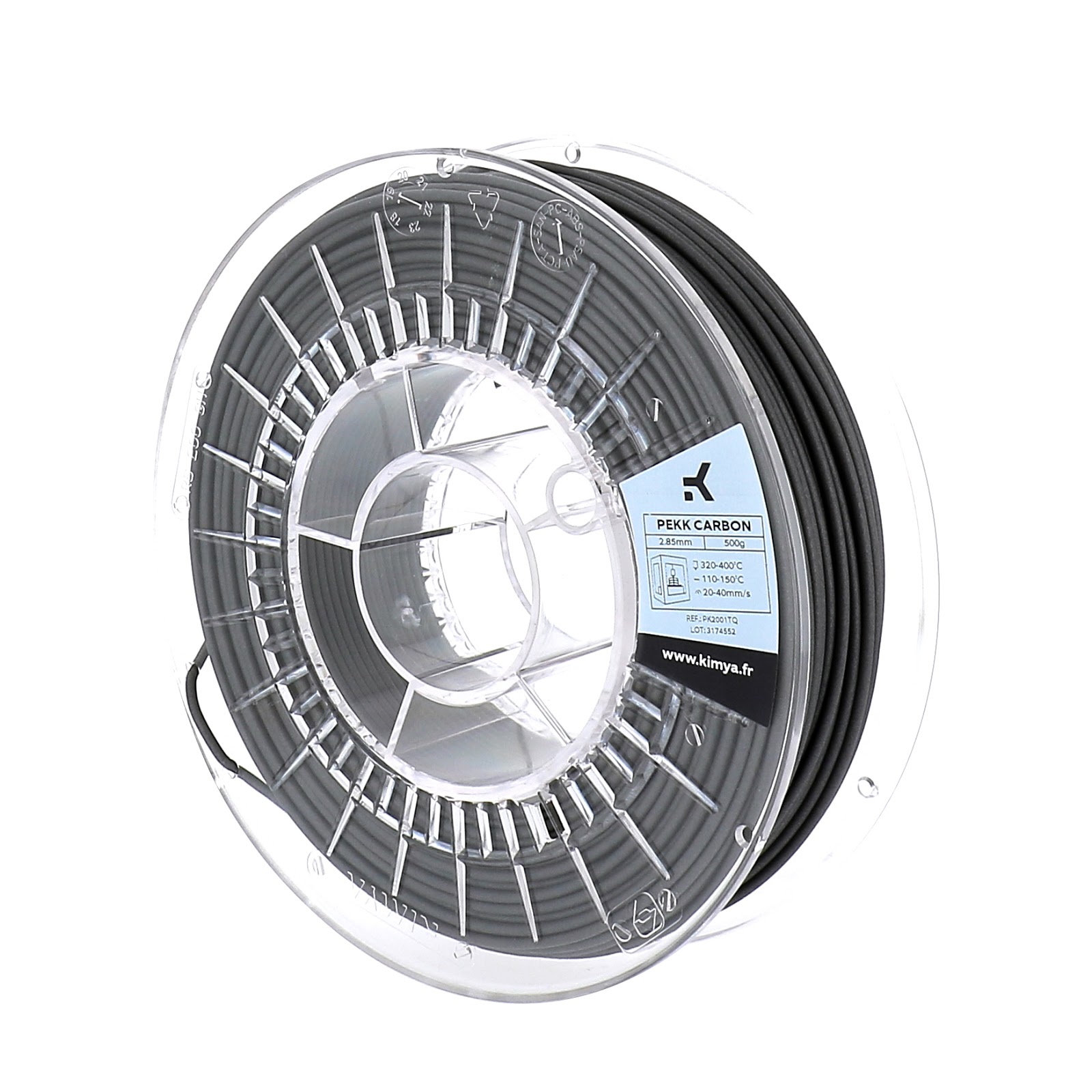
Kimya by ARMOR Group commits to offering solutions to specific needs of industrialists and manufacturers thanks to materials formulated and developed on demand. They have tailored their filament formulations perfectly to support the production process and the expected use value of the produced object.
Kimya originates from the Arab word لاكيميءا, alkīmiyā, from which the word alchemy derives. The goal is to combine additive manufacturing with this art of transmuting metals. Their name is evocative, it carries the promise of transformation from initial material to something wonderful: the 3D material becomes the finished object.
TECHNICAL MATERIALS
Kimya ABS Kevlar
Kimya ABS Kevlar belongs to the styrenic polymer family.
Acrylonitrile Butadiene Styrene Kevlar (ABS Kevlar) is a composite filament enriched in aramid fibers. It offers properties that are superior to a standard ABS. It provides the printed parts with increased resistance to abrasion. It is used for finished parts and tools. The Kimya ABS Kevlar 3D filament has the following properties:
- Low warpage – compared to ABS-S
- Lighter-weight printed parts compared to ABS Carbon

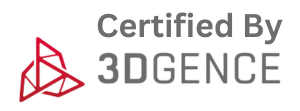


Kimya ABS Carbon
Kimya ABS Carbon belongs to the styrenic polymer family.
Acrylonitrile-butadiene-styrene-carbon (ABS Carbon) is a mixture of ABS and carbon fibers. The carbon fibers give the filament improved rigidity compared to a standard ABS. The Kimya ABS Carbon 3D filament has the following properties:
- No shrinkage
- Better tensile modulus than ABS
- Less warpage than ABS


Kimya PETG Carbon
Kimya PETG Carbon is a mixture of PETG and carbon fibers.
The addition of carbon fibers to PETG provides high levels of mechanical performance. Thanks to its rigidity, the PETG Carbon is highly valued in the production of special parts, notably in the paramedical and automotive fields. The Kimya PETG Carbon 3D filament has the following properties:
- High rigidity
- Improve ratio between: Ease of printing / Rigidity


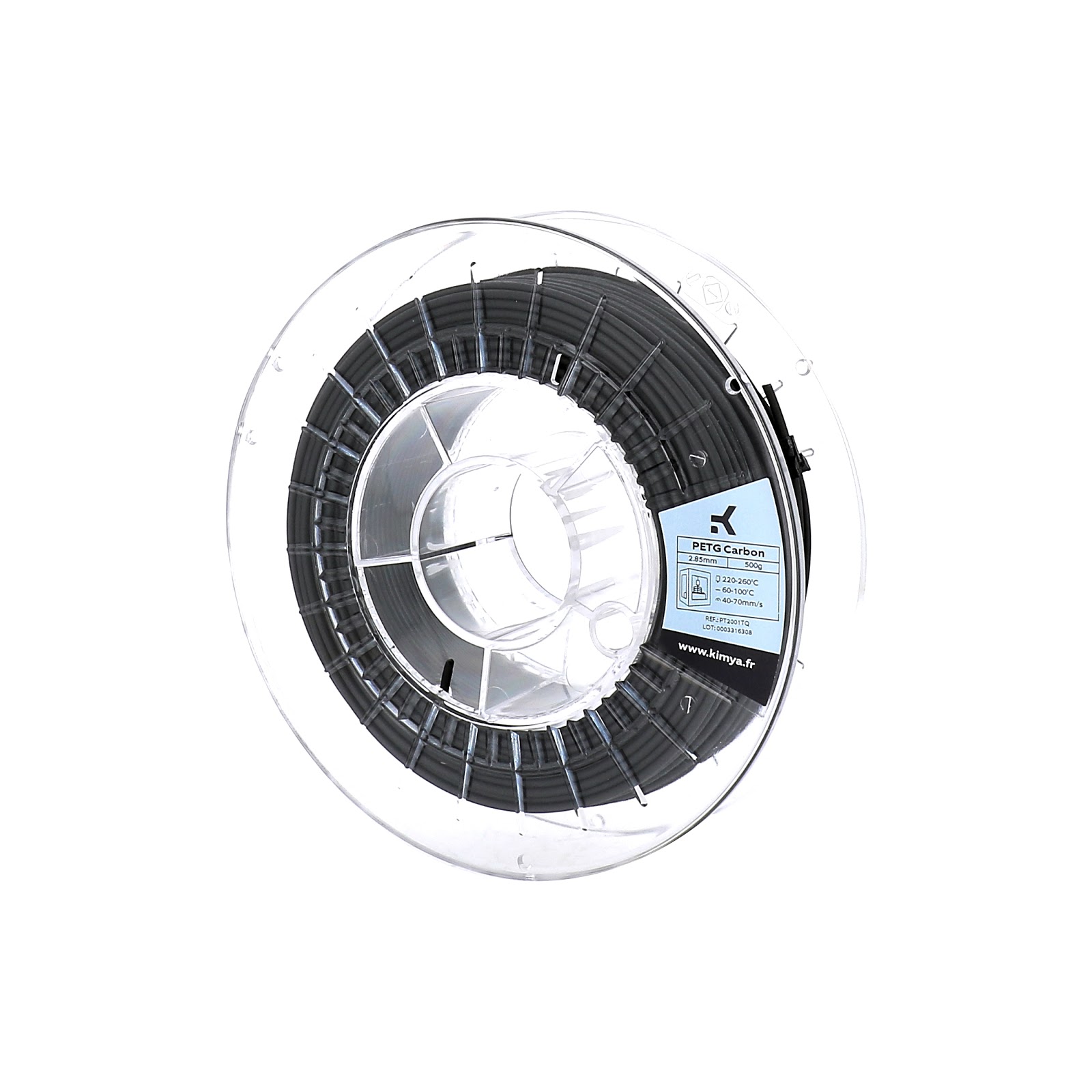

Kimya ABS-EC CNT
Kimya ABS-EC CNT belongs to the styrenic polymer family.
Acrylonitrile Butadiene Styrene electrical conductor (ABS-EC CNT) is a combination of ABS and electrically active additives: carbon nanotubes. ABS-EC CNT is resistant to impact, heat and ageing. It is used in the automotive and electronics industries. The Kimya ABS-EC CNT 3D filament has the following properties:
- Good resistance to impact
- High temperature resistance
- Electrical conductivity
Kimya ABS-ESD 3D Filament
The Kimya ABS-ESD 3D filament belongs to the styrenic polymer family. ABS-ESD is an Acrylonitrile Butadiene Styrene to which an additive has been added to give it Electro Static Discharge properties: this material protects against electrostatic discharge. It also provides good impact resistance. It is a lightweight and rigid material that is also easy to print. It is ideal for applications requiring protection against electrostatic discharge. Unlike the carbon black additives that are commonly used by competitors, the Kimya ABS-ESD uses a specific additive to give the filament the following properties:
- Coloring possible
- Not conductive
- Easy to print without jamming
- Protects against electrical discharge
- Lighter weight parts
- Complies with the REACH regulation and the RoHS directive
2-year KIMYA warranty.
Store away from light, humidity and heat to maintain the properties of the product.

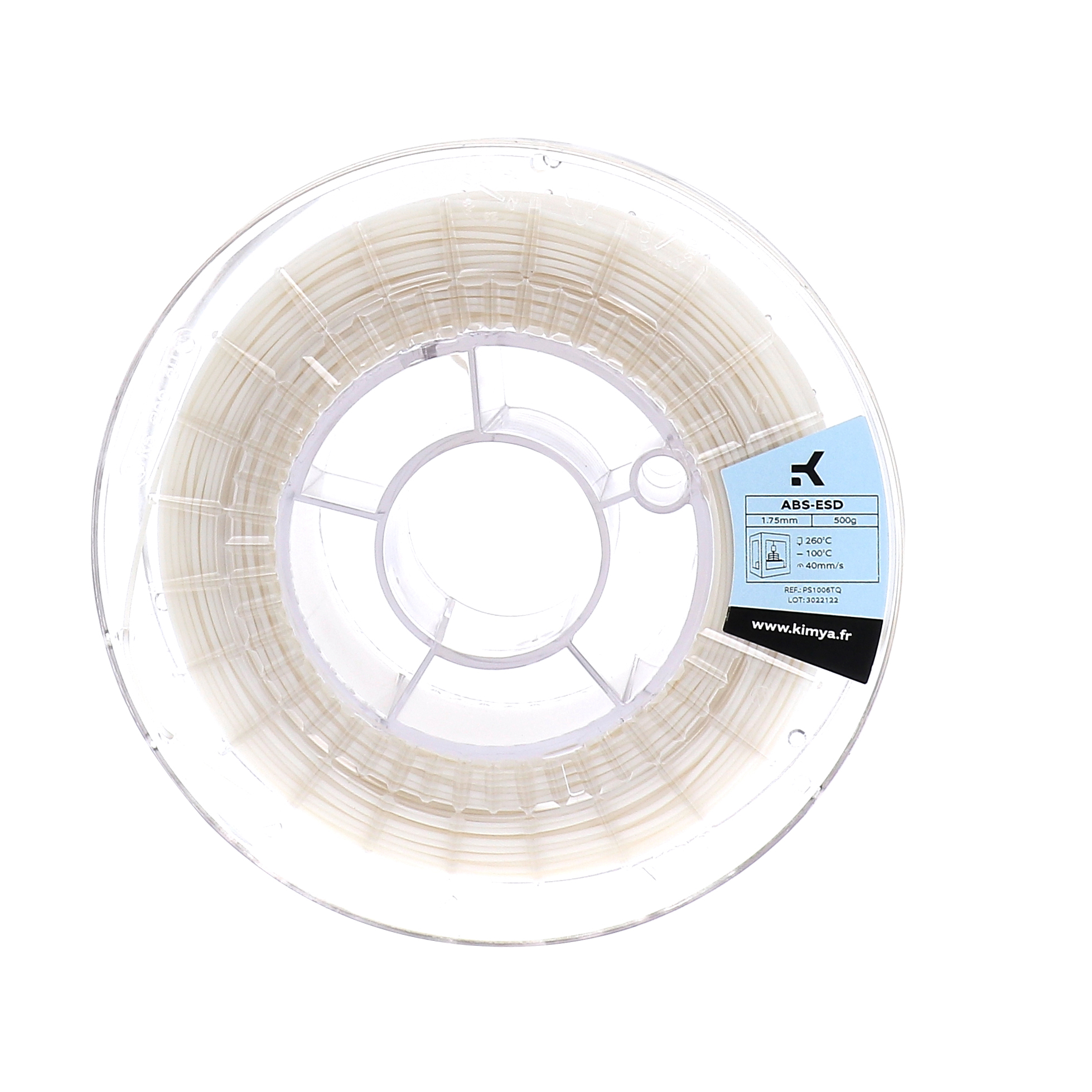
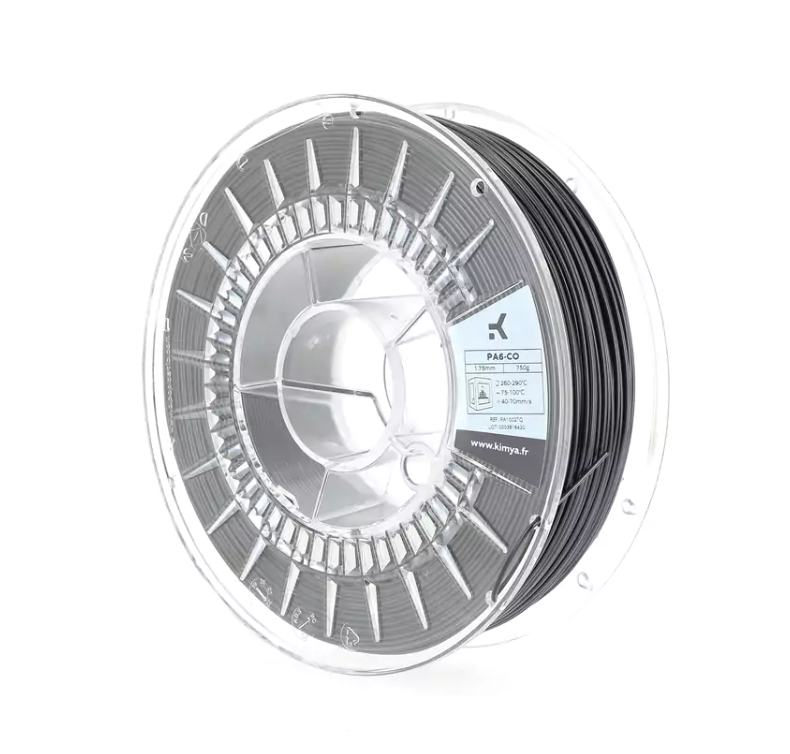
Kimya PA Carbon
Kimya PA Carbon is a carbon-fiber-reinforced nylon-based material. This engineering thermoplastic is known for its outstanding mechanical properties and excellent resistance to temperature and chemicals. The material can be used to manufacture hard, rigid parts. It is highly recommended for high-strength applications in high-temperature environments. Printed parts feature good dimensional stability and an attractive matte finish. The presence of carbon fibers also helps prevent distortion during printing.
Like our other nylon filament (Kimya PA6-CO), this material is very easy to print and can be used on open-chamber 3D printers. Due to the general moisture sensitivity of polyamides, the filament must be dried before printing.
- Excellent mechanical properties; hard and rigid.
- Very good heat resistance.
- Good dimensional stability and low deformation.
- Certifications REACH & RoHS
KIMYA 2-year warranty. Store away from light, moisture and heat to preserve product properties.
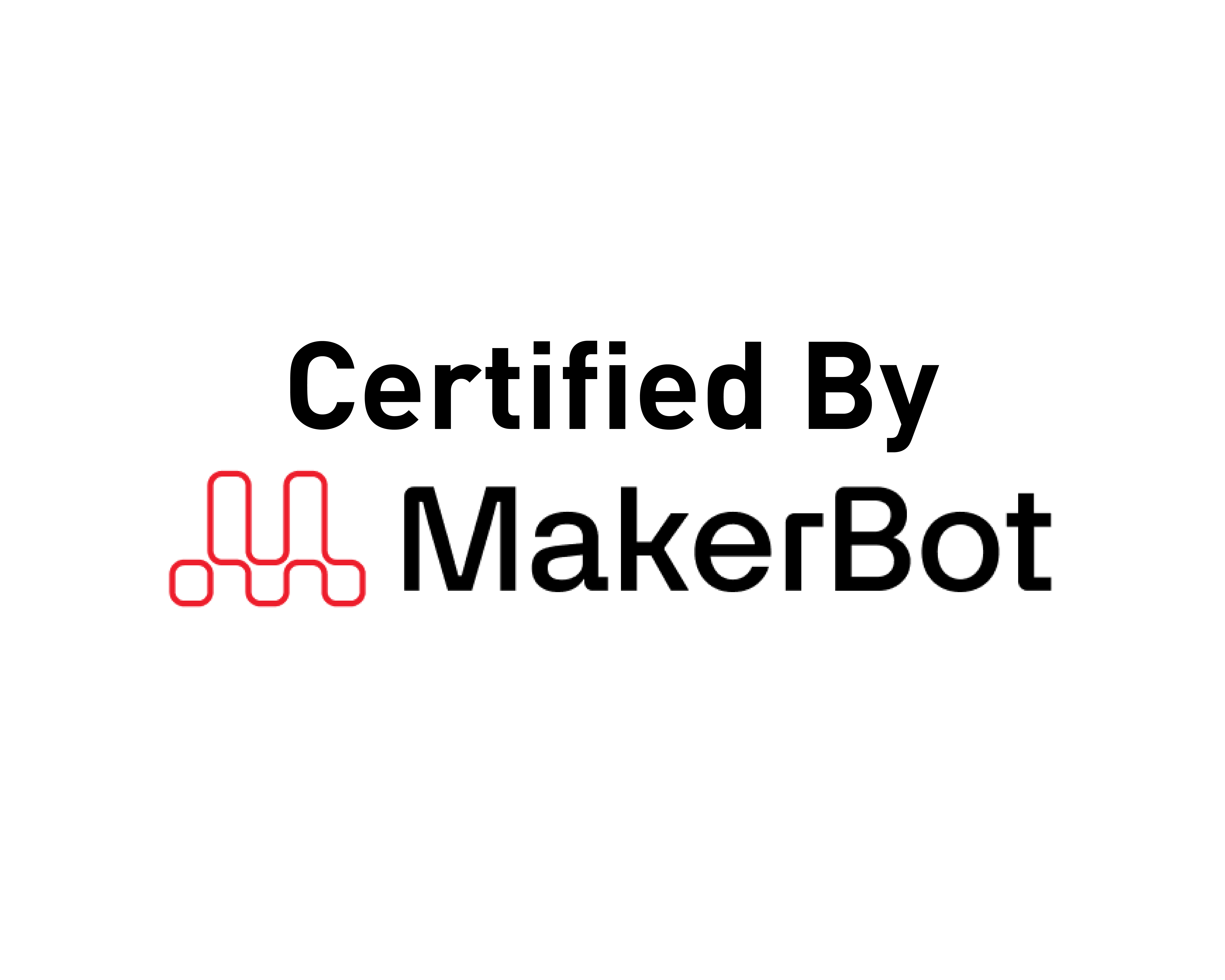
FLEXIBLE MATERIALS
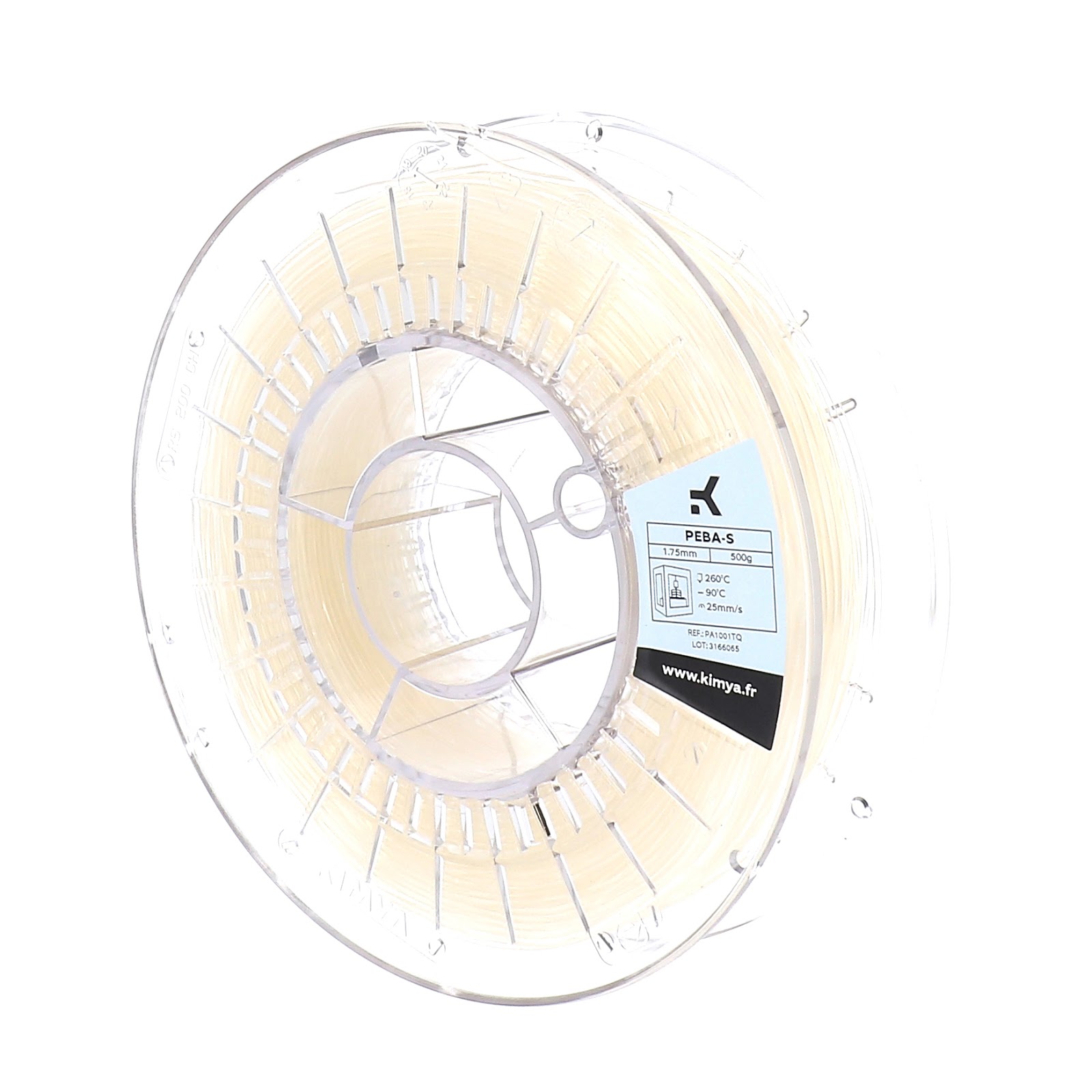
Kimya PEBA-S
Kimya PEBA-S is a thermoplastic elastomer.
Polyether block amide (PEBA) is produced via polycondensation of a carboxylic acid polyamide with an alcohol-terminated polyether. PEBA, based on PEBAX by Arkema, is very flexible: it has the best elongation % in the range (>550%). It can be used to make shoe soles or other sports equipment (cycling, golf, American football helmet) as it offers substantial energy return. It has the following properties:
- Flexibility (>550% tensile elongation at break)
- Impact resistance


Kimya TPU-92A
Kimya TPU-92A belongs to the thermoplastic polyurethane (TPU) family.
It offers good resistance to heat and to the external environment as well as a Shore hardness of 92A. It can be used to print flexible, resistant parts. The Kimya TPU-92A 3D filament is used in the food, electronics, automotive and consumer goods sectors. It offers the following properties:
- Flexibility
- Resistance to abrasion
- Food contact certification EU 10/2011 and FDA 21 CFR (except black color)
- Complies with the RoHS


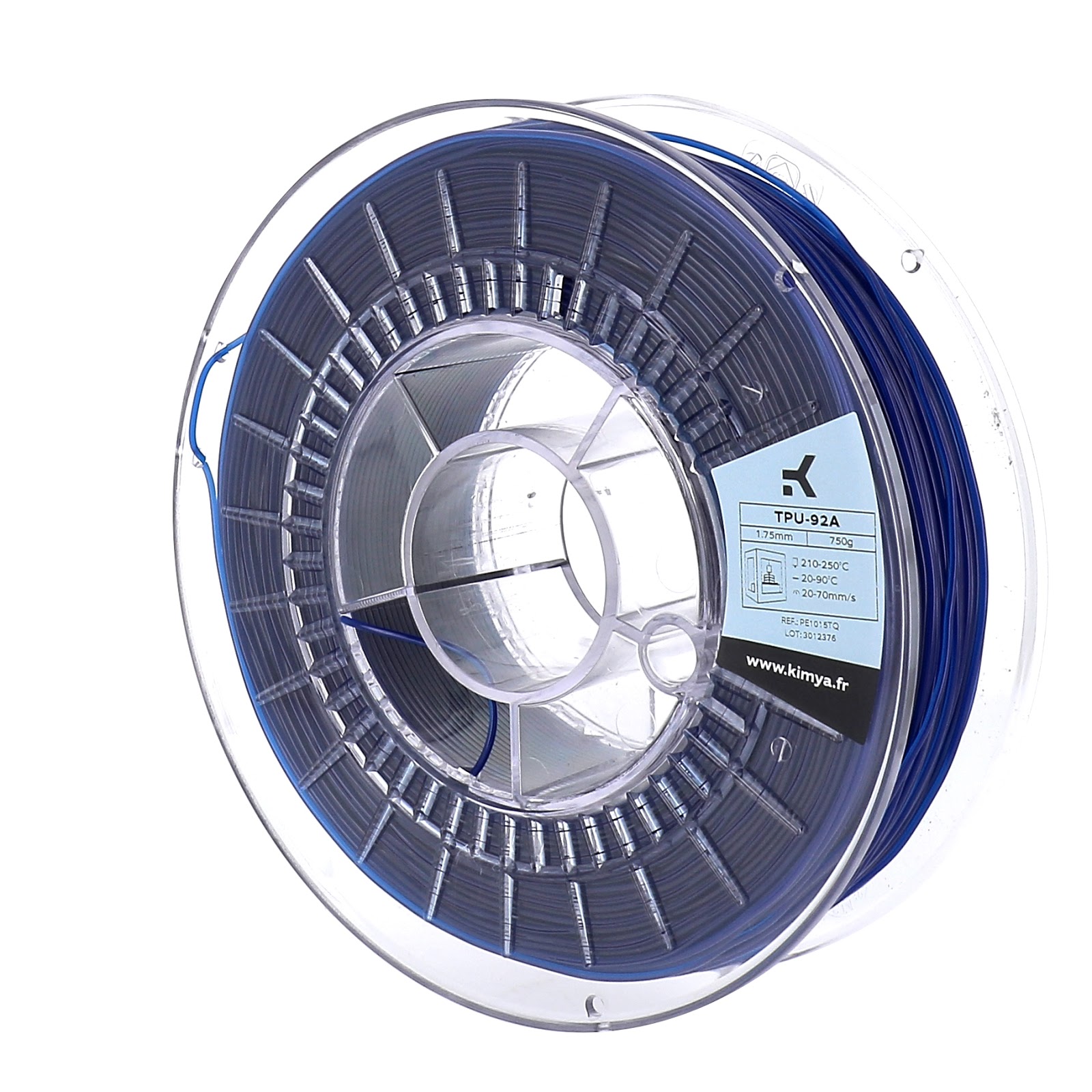
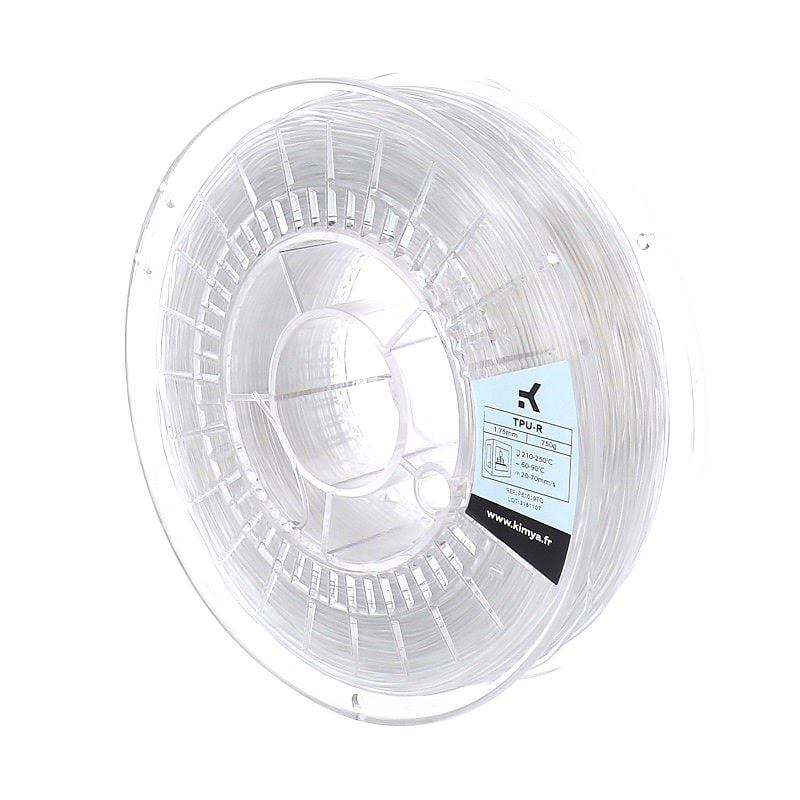
Kimya TPU-R
Kimya TPU-R belongs to the polyurethane family.
Thermoplastic “-R” polyurethane (TPU-R) is formulated using recycled materials. It is a translucent filament with good elasticity. Furthermore, it offers a Shore hardness of 92A. It is used to print resistant and flexible parts. The Kimya TPU-R 3D filament is used in the electronics, automotive and consumer goods sectors. It offers the following properties:
- Flexible
- 100% made from recycled materials


Kimya TPC-91A
Kimya TPC -91A belongs to the thermoplastic copolyester family: is an elastomer.
TPC is an elastomer obtained by copolymerization of two types of monomers: an ester (a rigid segment) and an ether (a flexible segment). It offers chemical and impact resistance. It provides Shore hardness of 91 A. It can be used to produce flexible parts. The Kimya TPC-91A 3D filament can be used in industrial applications in sectors such as electronics, textiles and roofing. It offers the following properties:
- Flexibility
- Elongation > 500%
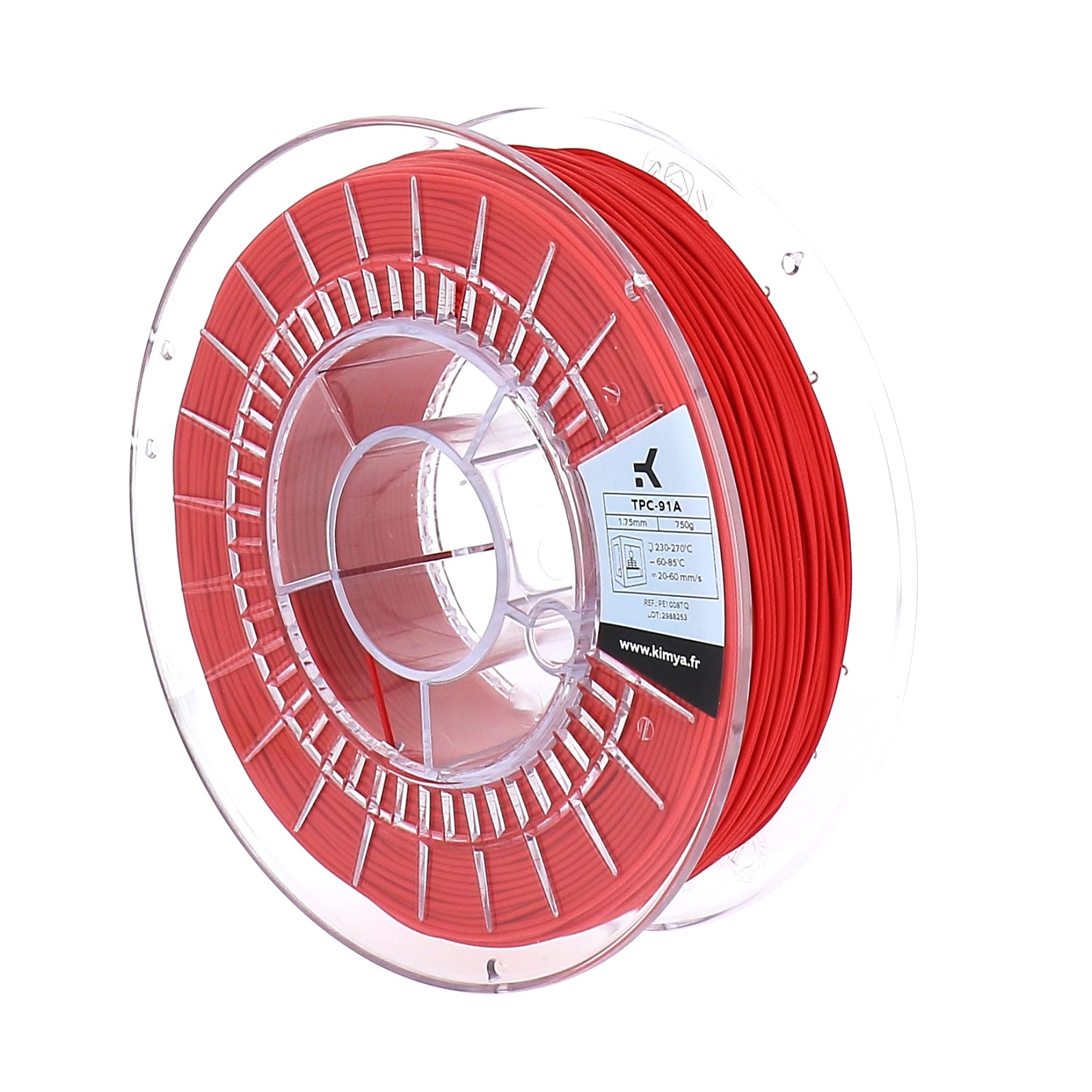
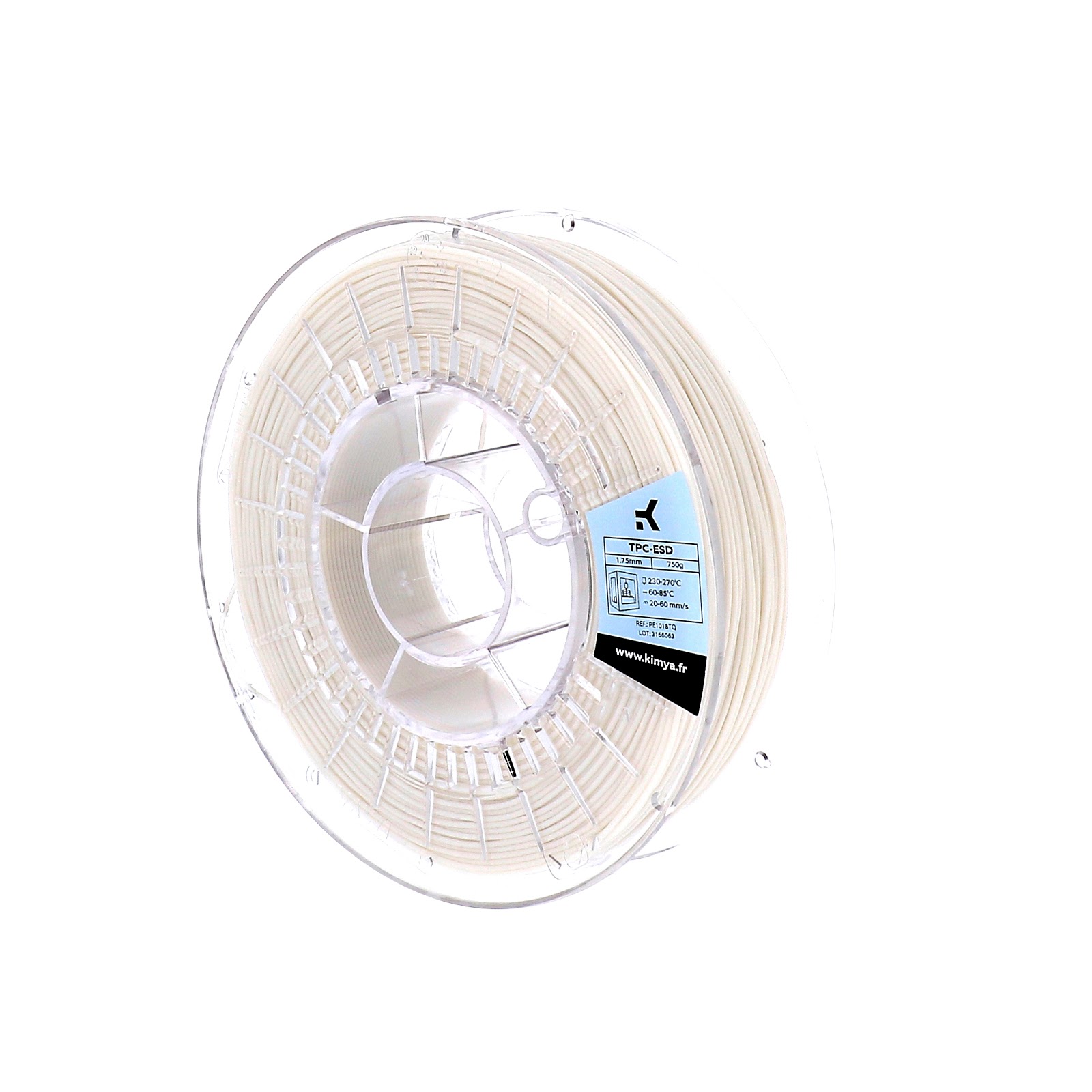
Kimya TPC-ESD
Kimya TPC-ESD belongs to the thermoplastic copolyester family: is an elastomer.
TPC is obtained by copolymerization of two types of monomers: an ester (a rigid segment) and an ether (a flexible segment). Its “-ESD” formulation also provides protection against electrostatic discharge. It offers resistance to chemicals and to impacts and has a Shore hardness of 91 A. It can be used to print flexible, elastic parts. The Kimya TPC-ESD 3D filament is used in industry to produce connectors, sensors and measuring devices. It has the following properties:
- Excellent flexibility
- Electro Static Discharge: protects against electrical discharge
ULTRA MATERIALS
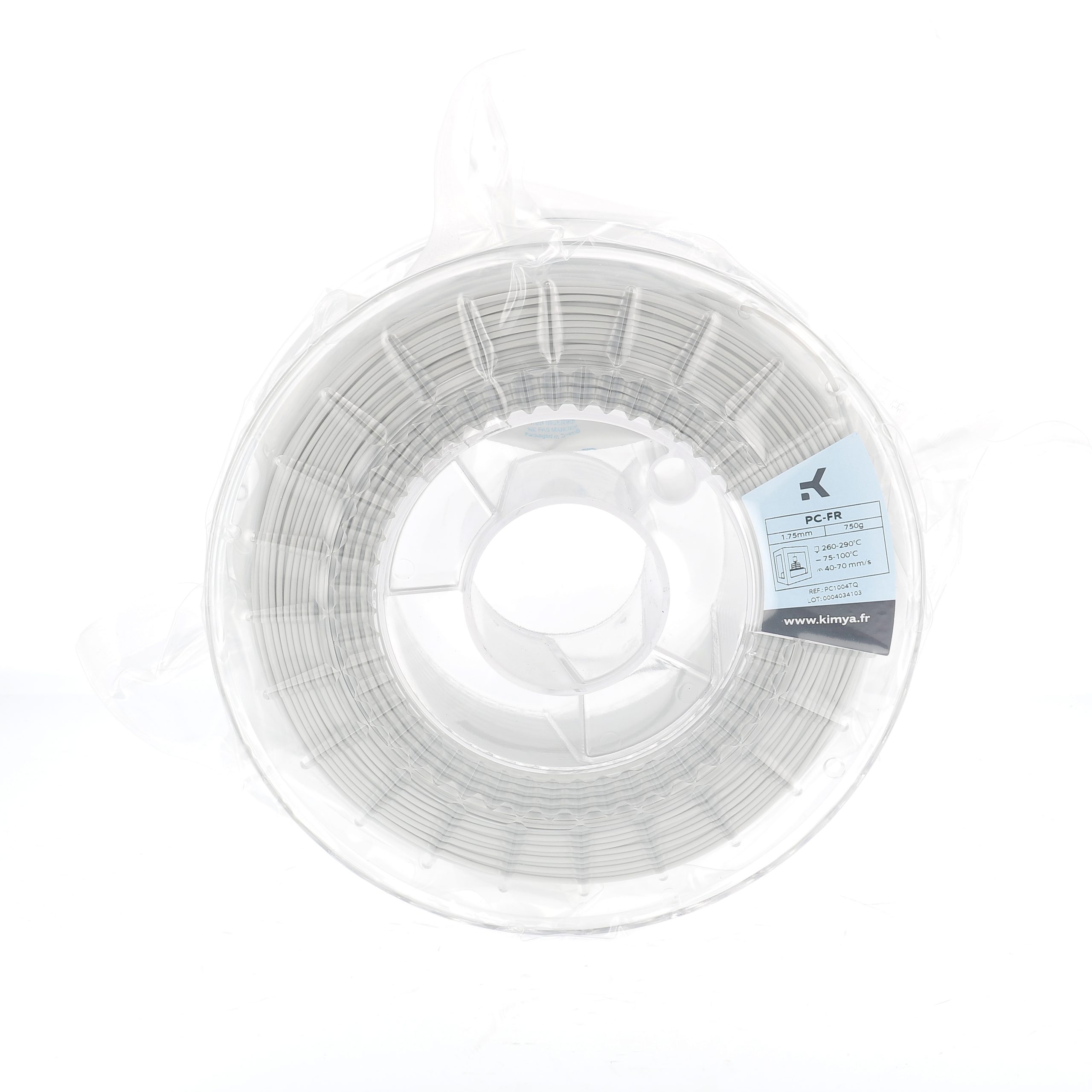
NEW! Kimya PC-FR 3D Filament
The Kimya PC-FR is an amorphous thermoplastic that combines the advantages of a polycarbonate with flame retardant properties linked to the formulation. This low moisture sensitive filament has good dimensional stability, a wide operating temperature range (-80 to 105°C) with its high Tg and good impact resistance. All these properties make it suitable for a variety of demanding applications such as the production of parts in the railway and automotive sectors as well as in the electrical and electronic fields.
- Good dimensional stability
- Wide usage temperature range (-80°C à +105°C)
- Flame retardant – EN45545
- HL3 according to the requirement R26 (tested FDM part thickness 1 and 5mm)
- HL3 according to the requirements R22, R23 and R24 (tested FDM part thicknesses 1,5 and 3mm)
- HL3 according to the requirements R1, R2, R3 and R6 (tested FDM part thickness 10mm)
- HL3 according to the requirements R1, R2, R3, R6, R7 and R17 (tested FDM part thickness 3mm)
- HL2 according to the requirements R7, R17 (tested FDM part thickness 10mm)
- Complies with the REACH regulation and the RoHS directive.
2-year KIMYA warranty.
Store away from light, humidity and heat to maintain the properties of the product.
Kimya PC-S
Kimya PC-S is an amorphous thermoplastic.
Polycarbonate (PC) is a transparent plastic. It offers high resistance to heat. It is solid and is suitable for demanding applications. It is well suited to a variety of applications such as the production of parts in the automotive, engineering and aerospace sectors, as well as for producing hulls, helmets, toy and electronic items. The Kimya PC-S 3D filament has the following properties:
- Can be sterilized
- Resistant to heat (up to 140°C)
- Food contact certification EU 10/2011, FDA 21 CFR

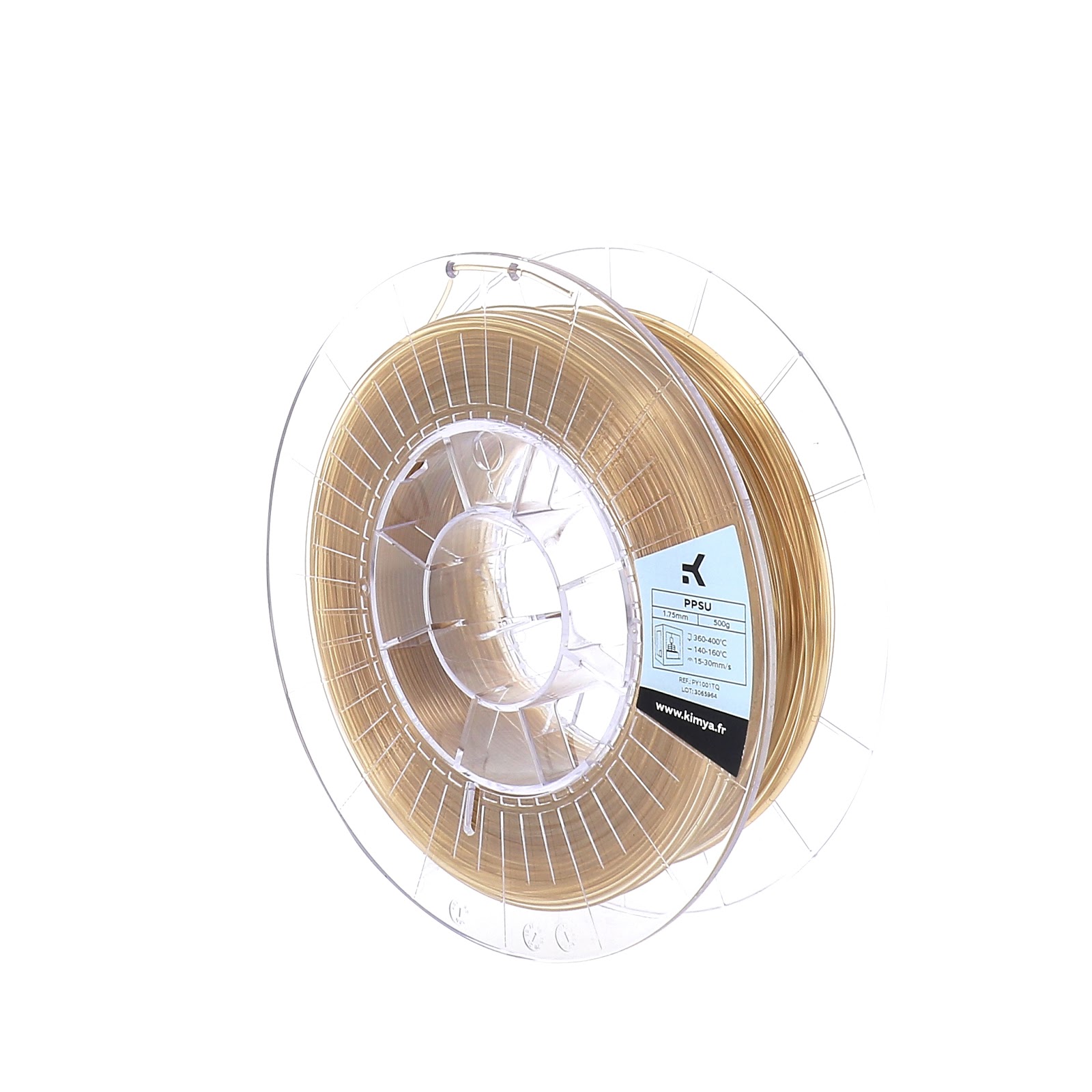
Kimya PPSU-S
Kimya PPSU-S belongs to the polysulfone family.
Polyphenylsulfone (PPSU) is an amorphous thermoplastic. It is a technical material with an elevated glass transition temperature and low humidity absorption. It benefits from good chemical and thermal resistance. PPSU-S can be used in multiple sectors, notably low-volume injection molds, automotive spare parts, chemical treatment, and oil and gas. It has the following properties:
- High temperature resistance
- Hydrolysis resistance
- Flame retardant – eligible to UL94 V0
- Aerospace FAR 25.853 Standard
- Food contact under EU 10/2011
Kimya PEI-1010
Kimya PEI-1010 3D filament belongs to the family of thermoplastic polyimides.
Polyetherimide (PEI) is an amorphous thermoplastic. It benefits from good resistance to temperature and solvents, as well as high dimensional stability. It is used in the electronics, transport and medical sectors. It has the following properties:
- High rigidity
- UV resistance
- Flame retardant – UL94 V0 eligible
- Food contact certification EU 10/2011, FDA 21 CFR
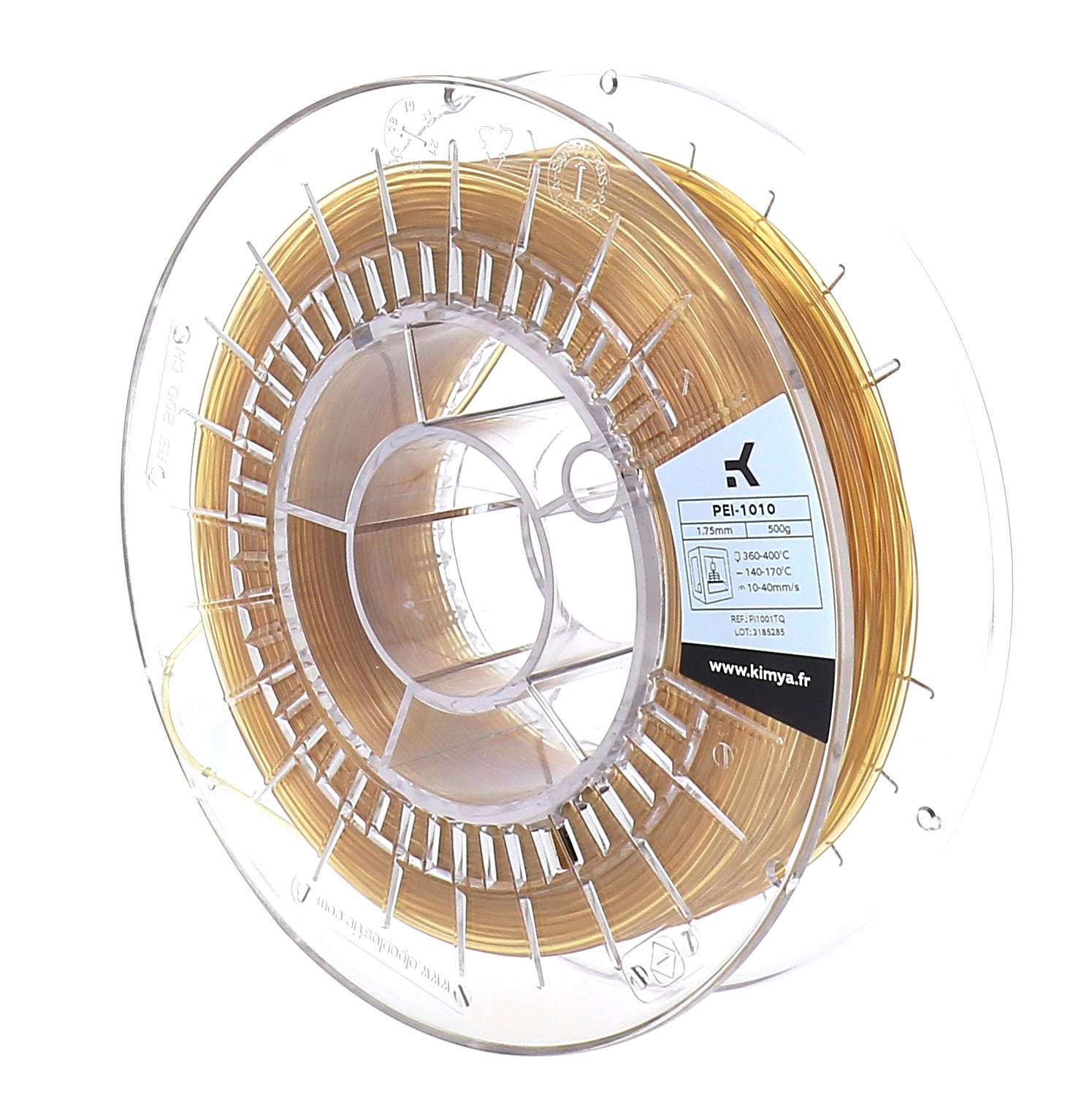

Kimya PEI-9085
Kimya PEI-9085 belongs to the family of thermoplastic polyimides.
Polyetherimide (PEI) is an amorphous thermoplastic. It benefits from good resistance to temperature, high resistance to abrasion and high dimensional stability. It is used in sectors such as aerospace, railway, electronics and transport etc. It is based on ULTEM® by Sabic and has the following properties:
- Temperature resistance
- Flame retardant – eligible to UL94 V0
- Railway fire and smoke standard EN45545
- Aerospace FAR 25.853 Standard
NEW! Kimya PEI Support for ULTEM
The Kimya PEI Support filament is a detachable support material to be used with both Kimya PEI-9085 and Kimya PEI-1010, filaments based on SABIC’s ULTEM. Thanks to its high temperature resistance, this support material is ideal for their ultra range of PEI filaments.
- High rigidity
- UV resistance
- Flame retardant – UL94 V0 eligible
- Food contact certification EU 10/2011, FDA 21 CFR
- Complies with the REACH regulation and the RoHS directive
2-year KIMYA warranty. Store away from light, humidity and heat to maintain the properties of the product.
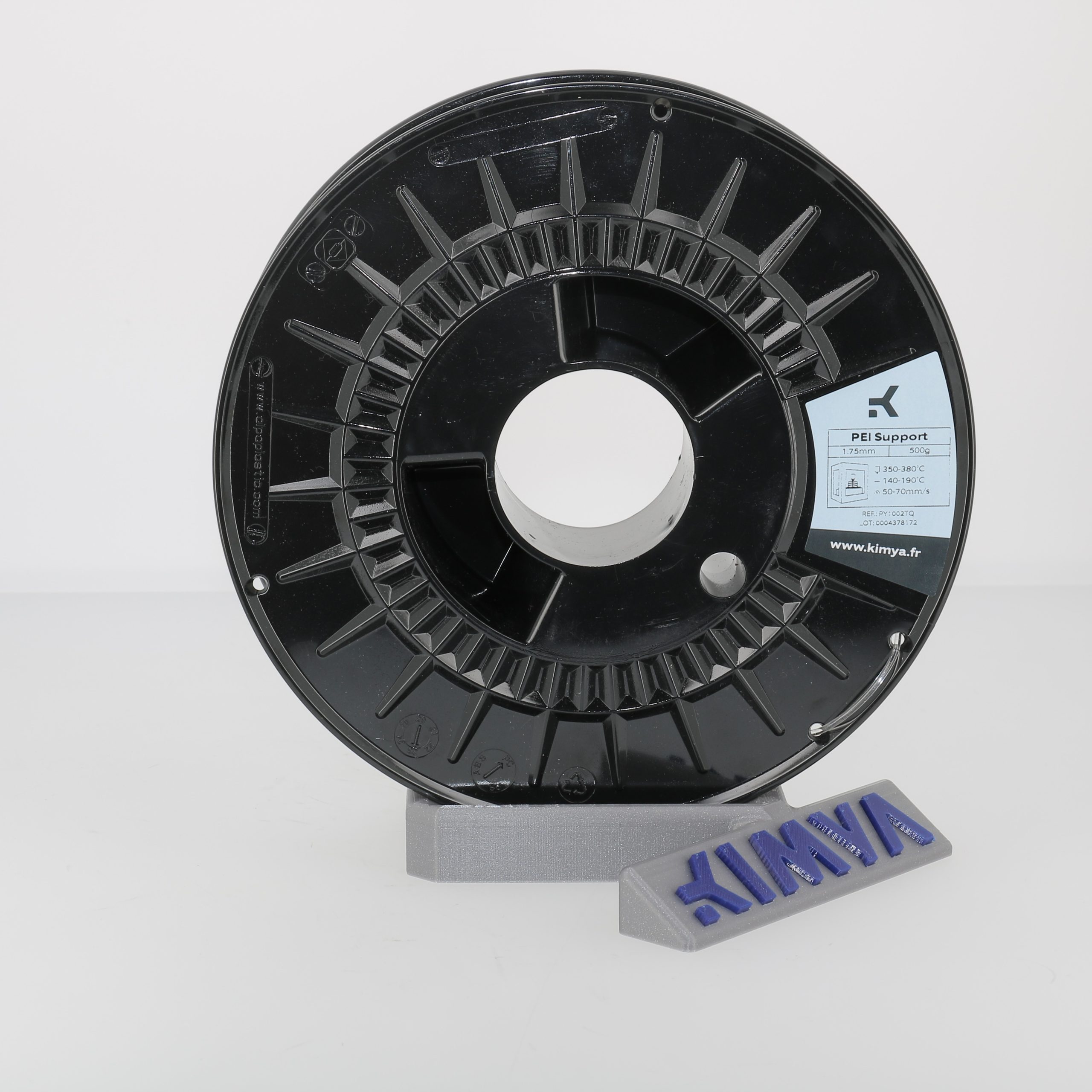
Kimya PEKK-A
Kimya PEKK-A belongs to the polyaryletherketone family.
Polyetherketoneketone (PEKK) is a thermoplastic polymer. PEKK-A is the amorphous form of PEKK, providing ease of printing. This is a material that boasts good mechanical properties and is resistant to high temperatures (<150°C). Produced using KEPSTAN® Arkema, it has been designed for technical applications. It can come into contact with hydrocarbons and fluids, enabling it to be used in multiple business sectors like aerospace, automotive and railways. It has the following properties:
- Temperature resistance
- Flame retardant – eligible to UL94 V0
- Complies with the RoHS and REACH standard
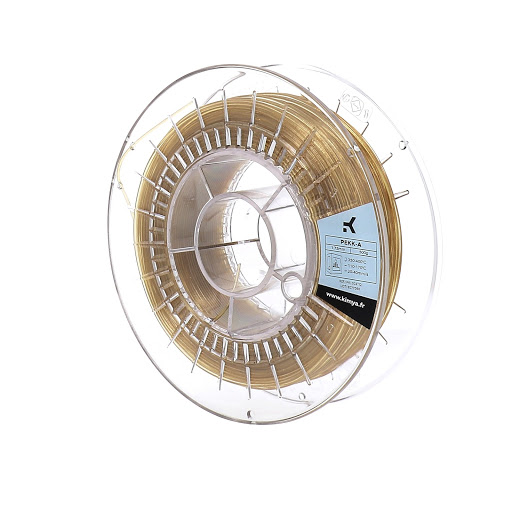
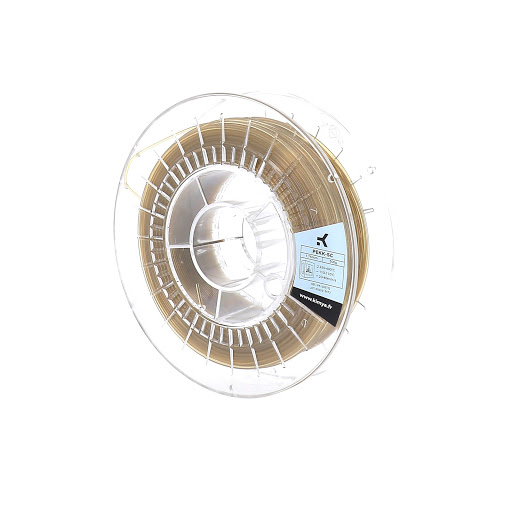
Kimya PEKK-SC
Kimya PEKK-SC belongs to the polyaryletherketone family.
Polyetherketoneketone (PEKK) is a semi-crystalline thermoplastic polymer. PEKK-SC is PEKK in semi-crystalline form, imparting it with increased heat resistance. It is therefore resistant to high temperatures, abrasion and chemical products. Manufactured from KEPSTAN® Arkema, PEKK has excellent mechanical properties. Manufacturers use it to produce components exposed to acids and hydrocarbons, such as fuel and lubricants. It is compatible with the smoke/fire standard EN 45 545 – essential in the railway sector. It has the following properties:
- Semi-crystalline structure
- Excellent mechanical properties
- Heat resistance (up to 260°C)
- Railway fire and smoke standard EN45545
- Aerospace FAR 25.853 Standard
- Flame retardant – eligible to UL94 V0
Kimya PEKK Carbon
Kimya PEKK Carbon belongs to the polyaryletherketone family.
Polyetherketoneketone (PEKK) is a thermoplastic polymer reinforced with carbon fiber. This combination gives it a high level of rigidity and heat-resistance. It can be used as a material in components exposed to acids and hydrocarbons, such as fuel and lubricants, and also to produce components located in engine housings. It has the following properties:
- Temperature resistance
- Reinforced with carbon fiber
